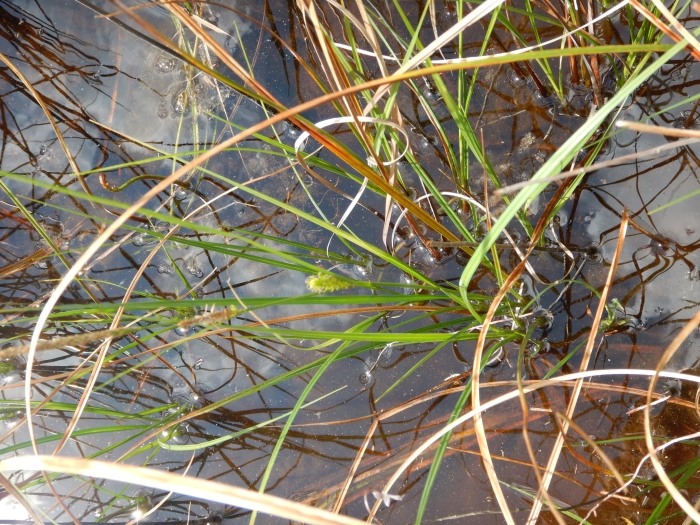Walter’s Sedge
(Carex striata)
Walter’s Sedge (Carex striata)
/
/

© Ryan Watson
CC BY 4.0
Image By:
© Ryan Watson
Recorded By:
Copyright:
CC BY 4.0
Copyright Notice:
Photo by: © Ryan Watson | License Type: CC BY 4.0 | License URL: http://creativecommons.org/licenses/by/4.0/ | Uploader: ryan84 | Publisher: iNaturalist |

























Estimated Native Range
Summary
Carex striata, commonly known as Walter’s Sedge, Curtis’s Sedge, or Straw Sedge, is a perennial herbaceous plant native to moist deciduous woodlands, wet meadows, and stream banks in Eastern North America. It has a moderate growth rate and typically reaches 1.5-2.5 feet (0.46-0.8 meters) in both height and width. The plant forms dense clumps of narrow, grass-like leaves and produces green, inconspicuous flowers that bloom in the spring. The flowers are not particularly showy, but they do add a subtle texture to the garden during their season.
Walter’s Sedge is valued for its ability to thrive in moist conditions and its utility in erosion control along waterways. It is often used in rain gardens, as a ground cover in wet areas, and for naturalizing in informal settings. This sedge prefers full sun to part shade and grows best in medium-draining clay, loam, or sandy soils. It requires consistent moisture and can tolerate occasional flooding. While generally low-maintenance, it can be susceptible to rust and leaf spot diseases. Walter’s Sedge is not known for aggressive roots or significant pest problems. It is a beneficial plant for native habitat restoration projects and supports local wildlife, including caterpillars of certain butterflies and moths.CC BY-SA 4.0
Walter’s Sedge is valued for its ability to thrive in moist conditions and its utility in erosion control along waterways. It is often used in rain gardens, as a ground cover in wet areas, and for naturalizing in informal settings. This sedge prefers full sun to part shade and grows best in medium-draining clay, loam, or sandy soils. It requires consistent moisture and can tolerate occasional flooding. While generally low-maintenance, it can be susceptible to rust and leaf spot diseases. Walter’s Sedge is not known for aggressive roots or significant pest problems. It is a beneficial plant for native habitat restoration projects and supports local wildlife, including caterpillars of certain butterflies and moths.CC BY-SA 4.0
Plant Description
- Plant Type: Grass
- Height: 1.5-2.5 feet
- Width: 1.5-2.5 feet
- Growth Rate: Moderate
- Flower Color: N/A
- Flowering Season: Spring, Summer
- Leaf Retention: Evergreen
Growth Requirements
- Sun: Full Sun, Part Shade
- Water: Medium
- Drainage: Medium
Common Uses
Bird Garden, Erosion Control, Low Maintenance, Rabbit Resistant, Water Garden
Natural Habitat
Moist deciduous woodlands, wet meadows, and stream banks
Other Names
Common Names: Curtis’s Sedge, Straw Sedge
Scientific Names: , Carex striata, Carex bullata, Carex polymorpha, Carex striata var. brevis, Carex striata var. striata, Carex walteriana, Carex walteriana var. brevis,
GBIF Accepted Name: